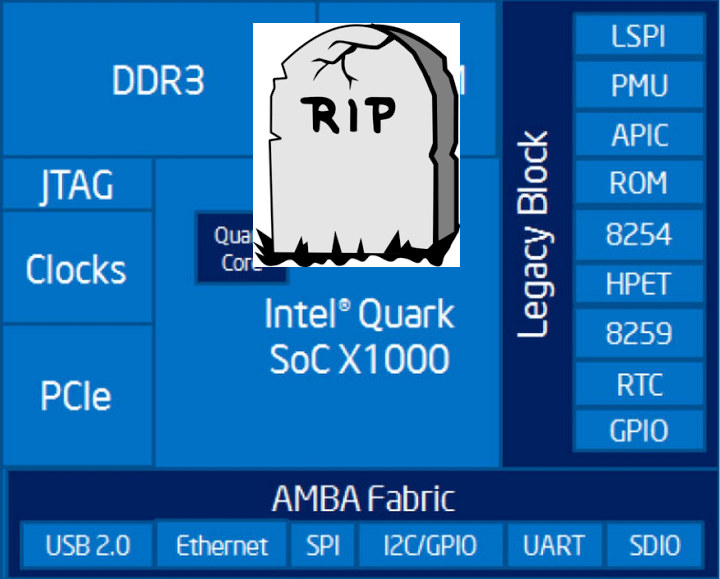I had completely forgotten about Intel Quark SoCs and MCUs found in development kits and modules such as the Arduino 101 board or Intel Curie module. Last time I heard about those chips, Intel had just discontinued several boards including the two aforementioned products, and I just assumed the Quark chips had quietly reached end-of-life as well.
But actually those will still be available for a bit longer, with Intel having just issued a product change notification for the discontinuance & end of life of the following parts:
- Intel Quark SoC X1020D
- Intel Quark SoC X1000
- Intel Quark SoC X1010
- Intel Quark SoC X1021D
- Intel Quark SoC X1001
- Intel Quark SoC X1011
- Intel Quark SoC X1020
- Intel Quark SoC X1021
- Intel Quark Microcontroller D1000
- Intel Quark Microcontroller D2000
- Intel Quark SE C1000 Microcontroller
- Intel Quark Microcontroller D2000
- Intel Quark SE C1000 Microcontroller
In case you have a product based one of those SKUs, you can still order until July 19, 2019, and the last shipment is scheduled to occur on July 17, 2022.
Via Anandtech, and thanks Jon for the tip.

Jean-Luc started CNX Software in 2010 as a part-time endeavor, before quitting his job as a software engineering manager, and starting to write daily news, and reviews full time later in 2011.
Support CNX Software! Donate via cryptocurrencies, become a Patron on Patreon, or purchase goods on Amazon or Aliexpress





